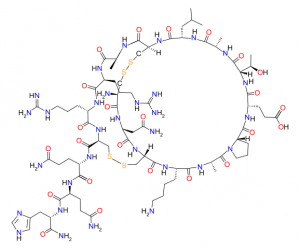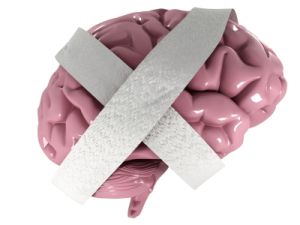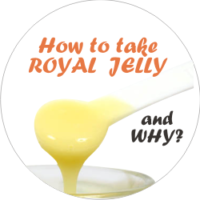Bee venom is known to have beneficial effects on the central and peripheral nervous system, which is why we use bee venom for therapy. It helps in heart diseases, arthritic and rheumatic conditions, and, with very good results, in immunotherapy for honeybee sting allergies. But there are also many reports on the use of it on different degenerative diseases of the nervous system. Among them: Multiple Sclerosis, Alzheimer’s and Parkinson’s disease. Or in effectively destroying viruses like HIV.
A few things about Alzheimer’s disease:
Alzheimer’s disease is the most common form of dementia among older people, which is a brain disorder that seriously affects a person’s ability to carry out daily activities.
It usually begins after the age of 60. The risk of developing this condition is higher if a family member already had it.
It begins slowly with the parts of the brain that control thought, recent memory and language. People may easily forget the names of people they know. (A related problem, mild cognitive impairment, causes more memory problems than normal for people of the same age. Not all people with mild cognitive impairment will develop Alzheimer’s disease.)
In time, symptoms get worse. People may not recognize family members or have trouble speaking, reading or writing. They may forget how to brush their teeth or comb their hair. Later on, they may become anxious or aggressive, or wander away from home. Eventually, they need total care. This can cause great stress for family members who must care for them.
No treatment can stop the disease. However, some drugs may help keep symptoms from getting worse. Or even improve the general condition of the body. Among them, bee venom is considered a very promising drug.
Here is a little bit of science:
Glutamate is the predominant excitatory neurotransmitter in the central nervous system. These neurodegenerative conditions have reported changes in glutamate release and uptake, due to alterations in the activity of glutamate transporters. The researchers studied the cell viability and signal transduction in glutamate-treated neuronal and microglial cells, in the presence and absence of bee venom. They induced glutamatergic toxicity in neuronal cells and microglial cells and found that bee venom protected against cell death.
Furthermore, bee venom significantly inhibited the cellular toxicity of glutamate, and pre-treatment with bee venom altered MAP kinase activation following exposure to glutamate.
These findings suggest that treatment with bee venom may be helpful in reducing glutamatergic cell toxicity in neurodegenerative diseases.
Other studies:
In 1991, Ikeda et al presented the study ‘Selective reduction of apamin binding sites in Alzheimer hippocampus: a Quantitative autoradiographic study.’
Apamin binding sites were examined using quantitative autoradiography in the hippocampus of 9 patients with Alzheimer’s disease and 8 age-matched controls.
Within the hippocampal formation from control subjects, apamin binding sites were highly concentrated in the subiculum and CAl. In Alzheimer’s disease there was a marked and discrete loss of apamin binding sites in the subiculum. This reduction of aparru’n binding sites in the subiculum correlated with cell density but not neuritic plaque density.
These results indicate that an anatomically discrete loss of Ca(2+)-dependent K+ channels within the hippocampal formation occurs in Alzheimer’s disease.
In 2011, Romero-Curiel et al presented the study ‘Apamin induces plastic changes in hippocampal neurons in senile Sprague–Dawley rats.’
They say: “Apamin is a neurotoxin extracted from honey bee venom and is a selective blocker of small-conductance Ca²⁺-activated K⁺ channels (SK). Several behavioral and electrophysiological studies indicate that SK-blockade by apamin may enhance neuron excitability, synaptic plasticity, and long-term potentiation in the CA1 hippocampal region, and, for that reason, apamin has been proposed as a therapeutic agent in Alzheimer’s disease treatment.
However, the dendritic morphological mechanisms implied in such enhancement are unknown. In the present work, Golgi-Cox stain protocol and Sholl analysis were used to study the effect of apamin on the dendritic morphology of pyramidal neurons from hippocampus and the prefrontal cortex as well as on the medium spiny neurons from the nucleus accumbens and granule cells from the dentate gyrus (DG) of the hippocampus. We found that only granule cells from the DG and pyramidal neurons from dorsal and ventral hippocampus were altered in senile rats injected with apamin. Our research suggests that apamin may increase the dendritic morphology in the hippocampus, which could be related to the neuronal excitability and synaptic plasticity enhancement induced by apamin.”
There were many individual reports on positive effects in dementia and Alzheimer, that were reported by Ludyanski and presented in Encyclopedia of Complementary Health Practice by CLARK, C; GORDON, R; HARRIS, B; HELVIE, C, in 1999.
What is apamin?
Apamin is an 18 amino acid peptide neurotoxin found in apitoxin (bee venom). Dry bee venom consists for 2-3% of apamin.
According to wikipedia, apamin selectively blocks SK channels, a type of Ca2+-activated K+ channel expressed in the central nervous system.
Due to its specificity for SK channels, apamin is used as a drug in biomedical research to study the electrical properties of SK channels and their role in the afterhyperpolarizations occurring immediately following an action potential.
In the study Effect of apamin, a toxin that inhibits Ca(2+)-dependent K+ channels, on learning and memory processes, the effects of apamin were tested on mice, observing the effects of it on learning and memory processes. The results suggested that apamin-sensitive KCa channels may contribute to memory processes.
Apamin is used in a method for early diagnosis of Alzheimer’s disease. See US Patent documents 5580748, 5705401, 5778893.
Can we buy Apamin from somewhere?
There are laboratories that sell it, here is an example: Alamone Labs. Please note that they sell it “for research purposes only, not for human use”. Talk to your doctor about using it, about undergoing trials you may want to participate in. But ask first, you may hear good news, science is progressing very quickly.
Can I get a treatment with bee venom?
The therapeutic benefits of honey bee venom have been known for a long time, especially for treatment of arthritic and rheumatic conditions in humans and in animals. Unfortunately it is used only in some countries, in particular China, Korea, Czech Republic and Romania, where there are entire clinics established for apitherapeutic treatment.
Bee venom can be taken as natural bee stings, injections, ointments, inhalations and tablets.
Venom immunotherapy is practiced in many European countries and in the USA. It is highly effective for reducing allergic sensitivity (local and systemic) in people, over time, and has been shown to reduce the risk of systemic reactions in people with honeybee sting allergies, by more than a 95%.
So, to answer the question, no, we cannot yet get a treatment with bee venom for neurodegenerative diseases. However, there is now a strong scientific interest in the pharmacological properties of bee venom. We’ve started using it for immunotherapy with very good results, soon we’ll be able to use it for other diseases.

Furthur reading:
– A good book on venom coming from bees, scorpions and spiders: Arthropod Venoms—Advances in Research and Application. You can read some excerpts here.
Related articles:
• Bee venom
• Bee venom for therapy: General Information
• Bee venom for therapy: Arthritis. What is apipuncture?
• Bee venom for therapy: Multiple Sclerosis
• Bee venom for therapy: Homeopathic Remedies
• Bee venom a possible natural treatment for Parkinson’s disease
• Honey and Alzheimer’s natural treatment
• What is the best cream for wrinkles?
• How to treat bee sting
• Venom Immunotherapy or HOW TO TREAT BEE STING ALLERGY FOR GOOD!
References and picture source:
– IKEDA-M.; DEWAR-D.; MCCULLOCH-J. (1991) Selective reduction of [1251] apamin binding sites in
Alzheimer hippocampus: a Quantitative autoradiographic study. Brain-Res. 567: 51-56.
– ROMERO-CURIEL A; LÓPEZ-CARPINTEYRO, D; GAMBOA, C; DE LA CRUZ, F; ZAMUDIO, S; FLORES, G (2011), Laboratorio de Neuropsiquiatría, Instituto de Fisiología, Universidad Autónoma de Puebla, CP 72570, Puebla, Puebla, México, Apamin induces plastic changes in hippocampal neurons in senile Sprague– Dawley rats. Synapse DOI: 10.1002/syn.20938;
– wikipedia.org/wiki/Apamin;
– nlm.nih.gov/medlineplus/alzheimersdisease.html;
– “Apllication for the approval of manuka honey with added bee venom”
– “Apamin” by JaGa – self-made using BKChem and Inkscape. Licensed under CC BY-SA 3.0 via Wikimedia Commons;
– “Happy old lady” picture credit mbolina via Big Stock Photo;
– “brain” featured picture credit David Castillo Dominici via Free Digital Photo.





